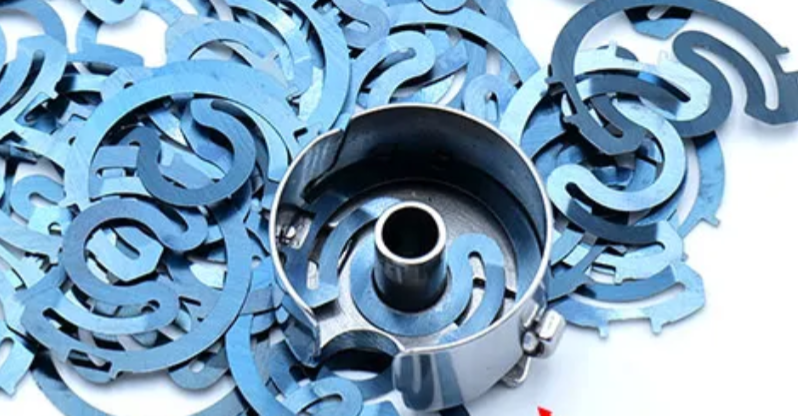
On commercial embroidery machines, do we really need the check spring inside the bobbin case? But we have to take it out for magnetic bobbins, don’t we?
That’s a fantastic and insightful question that gets to the heart of modern embroidery machine operation. You’re right to question this, as the use of check springs has evolved with the introduction of new bobbin technology.
Let’s break down the role of the check spring, the exception for magnetic bobbins, and what the experts are saying.
Bobbin cases are on sale at this link:
Towa Bobbin Case Style L (Small)
1. The Essential Role of the Check Spring
For standard, non-magnetic bobbins (the kind you wind yourself or regular pre-wound bobbins), the check spring is absolutely necessary. Its purpose is twofold:
Anti-Backlash: Commercial embroidery machines operate at very high speeds. When the machine starts and stops, the bobbin has a tendency to over-spin due to inertia. The check spring acts as a brake, applying light friction to the bobbin to stop this over-spinning. Without it, you would get loops, thread knots, and “bird’s nests” on the underside of your embroidery, leading to frequent thread breaks and downtime.
Tension Regulation: It provides consistent, controlled tension on the bobbin thread as it feeds out. This resistance works in concert with the top tension to ensure the threads interlock perfectly in the middle of the fabric. Without this balance, your stitches will be loose, uneven, and your designs will lack the crisp, professional finish you expect.
2. The Exception: Magnetic Bobbins
You are 100% correct. When using magnetic pre-wound bobbins, you must remove the check spring.
Self-Regulating Tension: Magnetic bobbins are designed with a magnetic core that creates its own consistent drag against the metal of the bobbin case. This magnetic pull performs the same function as the check spring—providing tension and preventing backlash—but more precisely and consistently.
Double Trouble: If you leave the check spring in with a magnetic bobbin, you are adding two competing sources of tension. The magnetic force pulls the bobbin down, while the check spring pushes against it. This results in the bobbin thread being far too tight, causing stitches to pull and pucker, and can lead to immediate and constant thread breaks.
3. The Experts’ Stance: Are They Right?
Yes, the experts who say not to use check springs on all types of bobbins are absolutely right. Their advice is based on a practical understanding of how different bobbins function.
The general consensus among commercial embroidery professionals is that you should have two separate bobbin cases:
Bobbin Case #1 (with check spring): This is for your standard, self-wound, and pre-wound bobbins. It ensures proper tension and prevents backlash.
Bobbin Case #2 (without check spring): This is specifically for magnetic bobbins. It allows the magnetic tension system to work as designed without any interference.
Using a single bobbin case for both types of bobbins requires you to constantly remove and re-install the check spring, which is not only a hassle but can also wear out the spring and bobbin case over time. By having two dedicated cases, you can simply swap them out depending on the type of bobbin you are using, saving you time and preventing major stitching issues.
In summary, the check spring is a critical component for standard bobbins, but it must be removed when using magnetic bobbins. The advice from experts to use separate bobbin cases is the most efficient and effective way to ensure consistent, high-quality embroidery regardless of the bobbin type.
